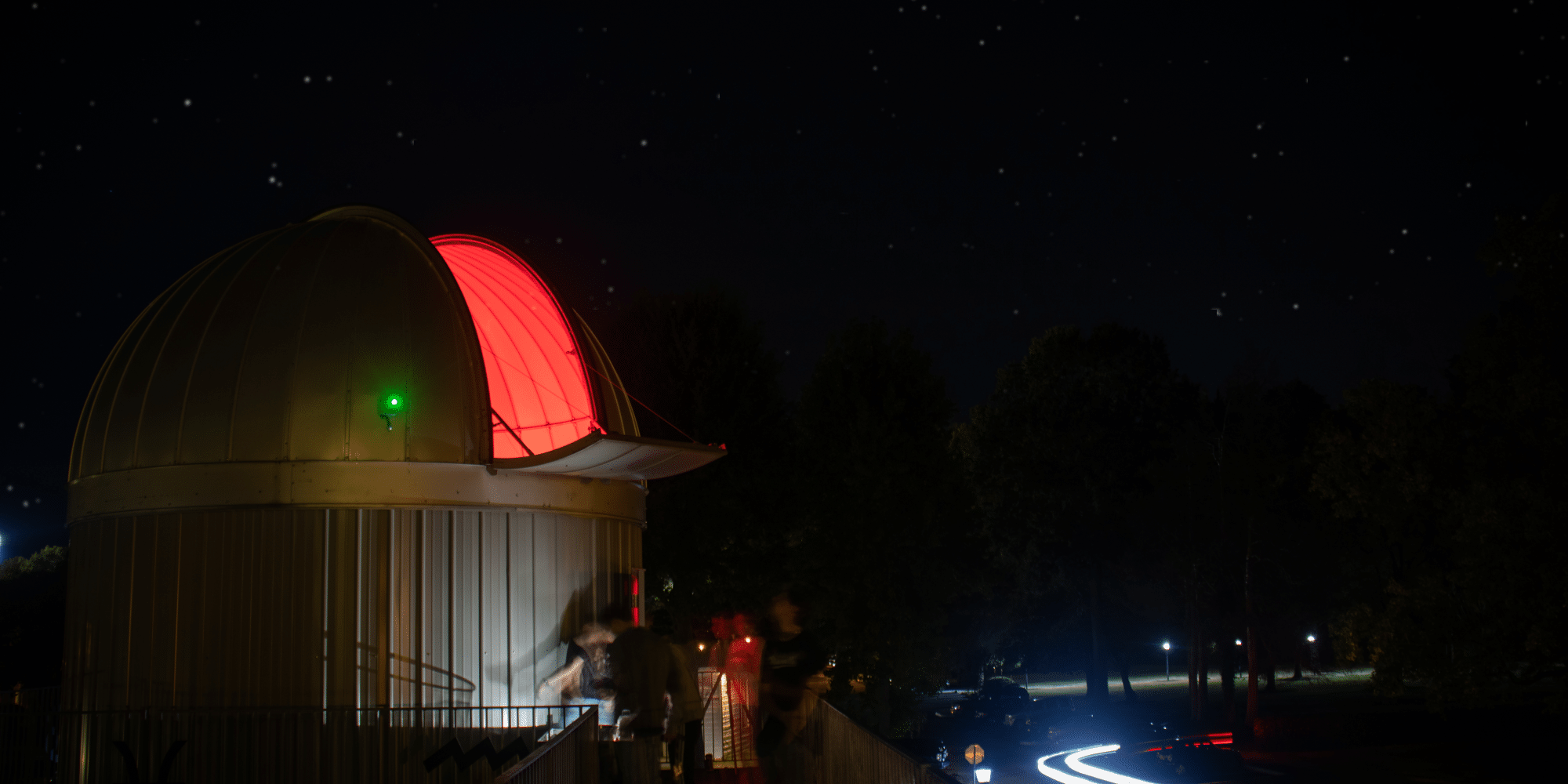Directions to the Observatory
From Washington and north:
Take Interstate 95 south to the Ashland/Hanover exit (State Route 54). Follow Route 54 west to U.S. Route 1. Turn right onto Washington Highway and drive 2 blocks to Caroline Street (Better Med is on the corner).Turn left on Caroline and proceed to the College Campus.
From Richmond and south:
Take Interstate 95 north to the Ashland/Hanover exit (State Route 54), and follow the directions given above.
From Charlottesville and west:
Take Interstate 64 east to the interchange for Interstate 295. Take 295 toward Washington until the interchange for Interstate 95 north. Follow the directions given above.
The entrance to the observatory is through the Copley Science Center. Please use the Caroline Street entrance to Smithy Hall or the main entrance facing Brock Hall and the Library. Entrance to the Observatory is on the second floor at the northeast corner. An elevator is available in the rear lobby.
History of the Observatory
The original Keeble Observatory was used by students in the College’s astronomy courses and by advanced physics students with an interest in astronomy from 1963 until 2016.
Construction of the original Observatory was initiated to house a 12 inch Newtonian telescope built and donated in 1960 by Foy N. Hibbard, a former director of the United States Weather Bureau in Richmond, Virginia. The dome was completed and the Hibbard telescope was first used in 1963. The present Cassegrain telescope was purchased from Tinsley Laboratories with funding assistance from the National Science Foundation in 1966. In 1988 the telescope drive was completely replaced during renovations, which also included raising the telescope’s pier and rebuilding the observing platform.
Adjacent to the Observatory was the 3-meter dish of the 1.4 GHz “Center of the Universe Radio Telescope (CURT1).” On the roof of the Copley Science Center was the dipole array for our second radio telescope, dubbed CURT2 (We decommissioned this telescope as of 2013 June 14. CURT1 was decommissioned in August 2016.) This facility was razed in August 2016.
The new and improved Keeble Observatory was constructed in summer 2017, connected to the northeast corner of the Copley Science Center. It houses a state of the art Ritchey-Chretien telescope with a 40 cm primary mirror. Today, it remains the largest telescope located between Washington D.C. and the Blue Ridge Mountains. Instrumentation includes CCD cameras for photography and photometry. Dedication of the new facility and a celebration of “first light” was held on 2017 November 3.



